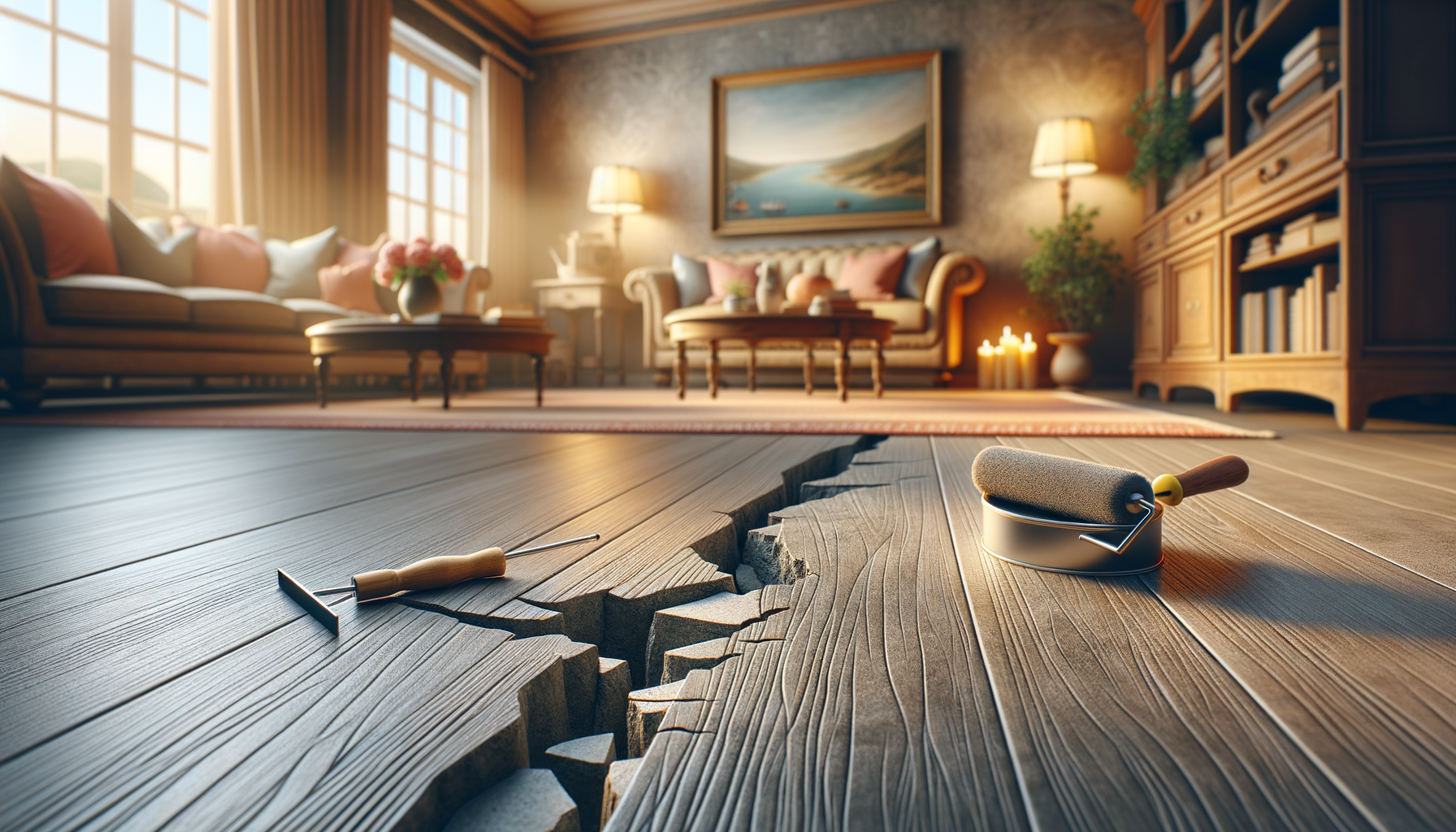What Are Floor Cracks?
Floor cracks are lines or gaps that you might see on your floors. They can make your house look less nice and may cause problems if they get bigger. These cracks can show up because of things like the ground under your house moving, changes in moisture, or the weather getting very hot or cold. You may notice them in places like basements, garages, or areas with concrete or tile floors.
Why Do Floor Cracks Happen?
Natural Settling
- Settling Process: Over time, the ground under your house moves a little, which can cause small cracks.
- Signs of Settling: Look for tiny, thin cracks running up and down or sideways.
Soil Movement
- Soil Changes: Some soils get bigger when wet and shrink when dry, putting pressure on your home’s foundation.
- Problem Soils: Clay-rich soils are the most troublesome, causing more cracks.
Moisture Levels
- Moisture Effects: Too much or too little water can make the soil move and create cracks in your floor.
- Examples: Plumbing leaks or heavy rain can make soil swell, while dry conditions can make it shrink, both causing cracks.
Temperature Changes
- Temperature Effects: Materials in your floor expand in heat and contract in cold, which can cause cracks.
- Examples: Floors heated in winter or exposed to summer sun can get stressed and crack.
Types of Floor Cracks
Shrinkage Cracks
- Description: Small cracks that happen as concrete dries and shrinks.
- Implications: Often seen in new concrete, they don’t usually mean big trouble but can look bad.
Settlement Cracks
- Recognition: Bigger, uneven cracks that show your foundation might have shifted.
- Differences: Unlike shrinkage cracks, these can be serious because they affect the structure.
Structural Cracks
- Indicators: Wide, jagged cracks or those that go through walls and ceilings.
- Seriousness: These suggest major foundation issues and need a professional to fix them.
How Serious Are Your Floor Cracks?
Minor vs. Major Cracks
- Minor Cracks: Small (less than 1/8 inch wide) and usually even.
- Major Cracks: Wider (greater than 1/8 inch), uneven, and might stretch through walls or ceilings.
When to Get Help
- Signs for Experts: Big cracks, particularly if they seem to be growing or if you see other problems in your home.
- Risks of Waiting: Ignoring major cracks can lead to serious damage, expensive repairs, and safety hazards.
How to Prevent Floor Cracks
Soil Preparation
- Good Soil Practices: Proper soil grading and compacting can reduce the risk of cracks.
- Soil Moisture Tips: Use soaker hoses during dry times and keep the area around your foundation consistently watered.
Proper Drainage
- Drainage Importance: Good drainage keeps water away from your foundation, preventing soil swelling.
- Improvement Tips: Install gutters, downspouts, and make sure the ground slopes away from your house.
Control Joints
- Purpose: These are planned cracks made during building to control where cracks will happen.
- Placement Tips: Put joints at regular intervals to keep cracks from appearing in random places.
Fixing Floor Cracks
DIY Repair Options
- Materials: Use concrete patching compounds or epoxy for small cracks.
- Repair Steps:
- Clean the crack.
- Put in the patching compound or epoxy.
- Smooth the surface and let it harden.
Professional Repair Methods
- Expert Techniques: Pros often use epoxy or polyurethane injections for bigger cracks.
- Example Repairs: Some companies show before-and-after pictures of their work to demonstrate how well it works.
When to Think About Replacement
- Replacement Signs: Severe cracking that affects the floor’s strength might need a full replacement.
- Cost vs. Benefit: While costly, replacing ensures long-term stability and can add value to your home.
Keeping Your Floors Crack-Free
Regular Inspections
- When to Check: Inspect your floors every six months for new cracks.
- Inspection Checklist: Look for new cracks, measure existing ones, and note any changes.
Moisture Control
- Moisture Tips: Use dehumidifiers and ensure good ventilation.
- Moisture Tools: Dehumidifiers and vapor barriers help keep indoor moisture levels steady.
Temperature Management
- Minimizing Cracks: Insulate floors and control drafts to keep temperatures stable.
- Insulation Tips: Use weatherstripping and insulate pipes to maintain even temperatures.
Final Thoughts
Key Points Recap
- Floor cracks can come from settling, soil movement, moisture, and temperature changes.
- Knowing the type and seriousness of cracks helps decide what to do.
- Preventing cracks and fixing them quickly is important to keep your home safe and looking good.
Act Fast
- Fixing cracks and taking care of your floors can stop small issues from becoming big problems.
Getting Help
- Reach out to professionals for expert advice and repairs.
- Look for more resources to ensure your home stays safe and crack-free.
By understanding what causes floor cracks and taking steps to prevent and fix them, you can keep your home strong and looking great.
Keywords: floor cracks, causes of floor cracks, preventing floor cracks, repairing floor cracks, identifying floor cracks


Leave a Reply